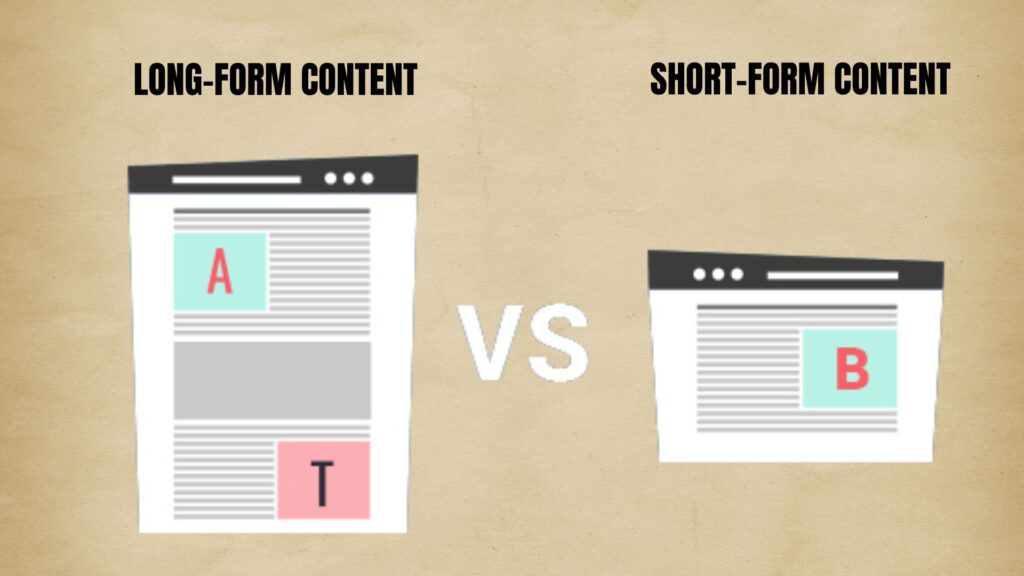Are copywriting and content writing the same thing?
People are often puzzled by the difference between copywriting and content writing. Although these two terms are often used interchangeably in the world of digital marketing writing but both terms put words on paper for entirely different purposes. This confusion can cost businesses missed leads, marketers weak conversions, and writers the wrong job roles.
Understanding the difference between copywriting and content writing is essential for success of your business. These two writing styles play different roles in how brands connect with their audience and drive engagement to increase sales and build trust with audience.
Today through this blog we will clear the concept of difference between copywriting and content writing and help you understand exactly when and how to use each one for maximum impact in your content strategy.

What is Content Writing?
Content writing is the art of creating valuable information and serving their target audience without directly pushing for sale. The primary purpose is to inform, educate, and entertain your readers while building trust and authority in your industry. SEO content writing is not only provides valuable information but also ranks your website higher on search results. This informational content comes in various forms like:
- Comprehensive blog posts
- Whitepapers that establish thought leadership
- eBooks
- Industry reports
When we talk about web content writing, it extends beyond just blog posts. It includes everything from your About Us page to product descriptions that educate rather than sell. In B2B content writing, this approach becomes even more critical because business buyers typically spend considerable time researching before making purchasing decisions.
For Example:
A brand might publish B2B content writing piece on ‘10 Strategies to Improve Team Productivity’ to attract business owners looking for solutions. This does not directly sell product but it nurtures relationships and builds brand authority.
Content writing is long term approach in which we do not generate immediate sales but it builds relationships and creates foundation of trust that eventually leads to conversions.
What is Copywriting?
On the other side, copywriting is all about conversion copywriting. Every word is written strategically to guide readers toward specific action. Its main goal is to get the reader to take specific action such as click, buy, sign up, and call. This persuasive writing appears in—
- advertisements to grab attention of audience in seconds
- email campaigns that drive opens and clicks
- landing pages that turn visitors into customers
- Social media captions with CTA (Call to Action)
Copywriting lies in understanding human psychology and motivation. It aims to trigger emotions, address pain points, and highlight benefits in concise and punchy way. A well crafted CTA (Call to Action) can be the difference between visitor who browses and one who buys. Brand storytelling also comes under the copywriting umbrella but with twist. The story is carefully constructed to build emotional connections that ultimately lead to brand loyalty and sales.
Difference Between Copywriting And Content Writing You Need To Know (7 Key Differences)
While both are crucial for successful digital marketing writing but understanding the difference between copywriting and content writing is essential for business success.
1. Purpose: Conversion vs Information
The main difference between copywriting and content is —
Copywriting = Conversions
Content Writing = Information
Copywriting exists to convert which means selling product, generating leads, and prompting any specific action. Every sentence is crafted with conversion in mind, using persuasive language that guides readers toward predetermined goal.


On the other hand, the main goal of content writing is to provide valuable information to their audience. Content writers aim to educate or entertain the reader and build long term trust. While it may indirectly lead to sales through relationship building and trust establishment but its primary mission is to serve the reader’s informational needs.
- If you are launching any new product and need sales then you want copywriter.
- If you are creating guide to answer user questions then you want content writer.
2. Writing Style: Persuasive vs Informative
When it comes to copywriting vs content writing styles then the difference is like night and day. Copywriting uses persuasive writing and psychology based techniques like emotional triggers and urgency creators. It uses power words, social proof, and compelling narratives that push readers toward CTA (Call to Action).
Content writing adopts an informative and educational tone. It presents facts, explains concepts, and provides valuable relevant information without the heavy persuasive elements. The style is more conversational and helpful which focusing on clarity and understanding rather than persuasion.
3. Structure: Short-form vs Long-form Content

Copywriting is usually in short-form content that delivers maximum impact quickly. The structure of copywriting is designed for quick consumption and immediate action.
Content writing is in long form like this article. Blog posts can be really long, guides might cover several sections, and whitepapers often explore detailed topics in depth. The structure supports thorough explanation and detailed information sharing.
4. Audience Intent: Action-Oriented vs Research-Focused
Understanding audience intent reveals another important difference between copywriting and content writing. Copywriting targets audiences ready to take action who are in the buying mindset and need that final push to convert. These readers have specific intent and are closer to making decisions.

Content writing serves those audiences who are in early phase and gathering information to compare before making decisions. Their intent is learning focused rather than action focused and they are typically earlier in the buyer’s journey.
5. Tone: Urgency vs Authority
The tonal differences in copywriting vs content writing reflect their different objectives. In copywriting, tone often creates urgency like–
- Limited time offer!
- Grab yours now!
- Don’t miss out!
- Hurry up!
In content writing the tone builds authority and trust. It is more informative, neutral, and focused on credibility. This authoritative tone is important for effective SEO content writing as it contributes to perceived expertise and trustworthiness by search engines.
6. Placement: Sales Pages vs Blogs/Articles

Copywriting is strategically placed where purchase decisions happen. Copywriting dominates sales pages, landing pages, email campaigns, advertisements, and anywhere conversion is the primary goal.
Content writing lives primarily in blogs, resource sections, knowledge bases, and educational materials. It’s positioned where people go to learn and research and supports the earlier stages of the customer journey.
Placement plays important role in deciding whether to go with copywriting vs content writing.
7. SEO Role: Conversion-driven SEO vs Content-driven SEO
Both copywriting and content writing play important roles in SEO but their approaches differ. SEO content writing focuses on ranking for informational keywords and building topical authority through comprehensive coverage of subjects. It targets keywords that people use when researching and learning.
Conversion copywriting incorporates SEO elements but prioritizes conversion focused keywords and phrases that indicate buying intent. It balances search optimization by ensuring that traffic not only arrives but also converts.
Copywriting vs. Content Writing: When to Use Which for Your Business
Still thinking which one is best for you?
The truth is, you need both because smart digital marketing writing approach uses both strategically to guide users from awareness to action. Your content attracts and educates prospects while your copy converts them into customers. Understanding the difference between copywriting and content writing allows you to create more effective marketing funnels that guide prospects from awareness to purchase.
Let’s clear out this confusion with an example:
Suppose you run skincare brand.
- Providing information in your blog section about “5 Common Skincare Mistakes” is content writing that is informational and SEO-rich.
- Your landing page saying ‘Get 20% off on face cream today!’ is copywriting which is written to make you buy fast.
Copywriting vs. Content Writing – Final Thoughts
Difference between copywriting and content writing lies in intent, tone, structure, and audience. Both roles involve writing. Content writing builds relationships and establishes authority while copywriting drives action and generates revenue. Both are essential components of successful marketing strategy.
↪ If you want to inform and educate your target audience then go for content writer.
↪ If you want to sell, go for copywriter.
When you understand these differences between copywriting and content writing you will make smarter decisions about your marketing investments.
FAQ’s
Q1. What is the difference between copywriting and content writing in digital marketing?
Ans. Copywriting is used to get quick actions from audience such as clicks and content writing is used to provide informative content to people through blogs, guides, and articles.
Q2. Can the same person do both copywriting and content writing?
Ans. Yes, many writers do both. They just need to adjust their style depending on their goals.
Q3. What is an SEO content writer
Ans. SEO content writer creates useful content using the right keywords to help websites rank higher on search engines and bring in more visitors.
Q4. What is Copywriting?
Ans. Copywriting is writing meant to convince people to take actions like buying something, clicking button, and signing up.




